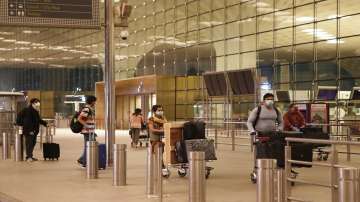COVID-19 cases in Japan increased by 87 to 15,662, with the figure including 39 new infections in the capital, remaining below 100 for a sixth straight day and dropping well below the April 17 peak of 201 cases, official figures showed. The nationwide death toll from the pneumonia-causing virus now stands at 619, including those from a cruise ship that was quarantined in Yokohama near Tokyo, the latest figures on Friday showed, Xinhua news agency reported.
Economic Revitalization Minister Yasutoshi Nishimura, who also serves as Japan's minister in charge of the coronavirus response, said on Friday that the number of COVID-19 cases in the country is dropping, but before restrictions are lifted the slowdown in the pace of new infections must continue for a certain duration.
Nishimura attributed the decline in new infections to efforts made by the public to adhere to the government requests including to refrain from going outside without good reason, work from home, significantly reduce human-to-human contact, avoid crowds and wear masks outside, among others.
Noting that the number of people discharged from hospitals is increasing, Nishimura also said that there are plans in place to ease restrictions in 34 of Japan's 47 prefectures that are not under special alert.
He said 27 prefectures are mulling whether to lift the stay-at-home request and replace it with a "stay-in-your-prefecture" measure, but requests to avoid visiting entertainment districts to eat and drink will likely be maintained.
Nishimura also said that gatherings of up to 50 people may be allowed in 21 prefectures that have not been overly affected by the spread of the virus, but stressed that preventative measures were key as the virus can be spread by asymptomatic carriers.
In terms of the nationwide state of emergency being lifted, he said that the focal point for experts was on the number of new daily infections and that officials needed to see definitive trends on a weekly and two-weekly basis.
His remarks echoed those of Japanese Prime Minister Shinzo Abe who said that he would consult with experts on May 14 and consider if the emergency period can be lifted at an earlier juncture based on varying factors including the rate of new infections.
The Japanese leader, who issued the extension until the end of May of the nationwide state of emergency on Monday, also said the capacity of the health care system must be taken into consideration when deciding on when the emergency period can be ended.
As for the latest infection figures, Tokyo remains the epicenter of Japan's outbreak with 4,810 confirmed infections, accounting for more than one-third of all cases across the nation, followed by Osaka Prefecture with 1,716 infections.
Kanagawa Prefecture, meanwhile, has recorded 1,148 cases, Saitama Prefecture 943 infections, Hokkaido Prefecture 934 infections, while Chiba Prefecture has recorded 870 cases of COVID-19, according to the latest figures.
The health ministry also said there are currently a total of 291 patients considered severely ill and are on ventilators or have otherwise been admitted to intensive care units, while a total of 6,557 people have been discharged from hospitals, according to the figures.
Latest World News
